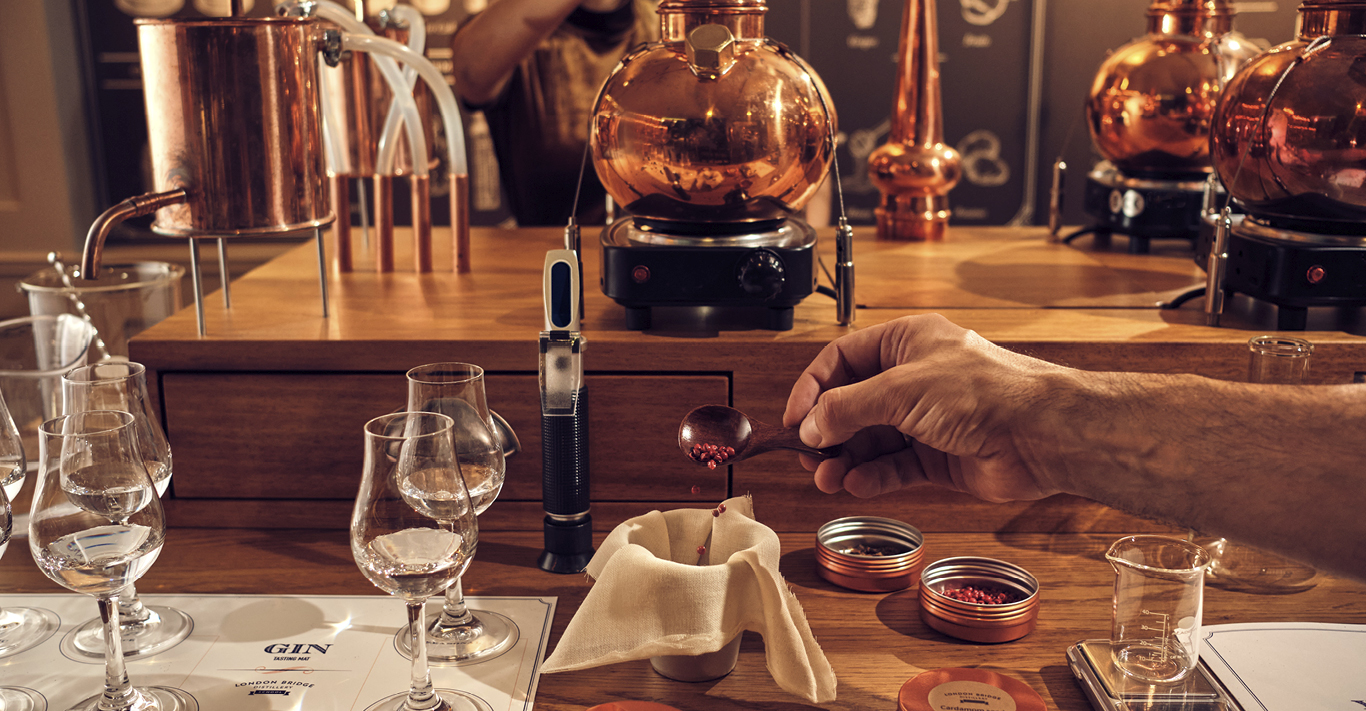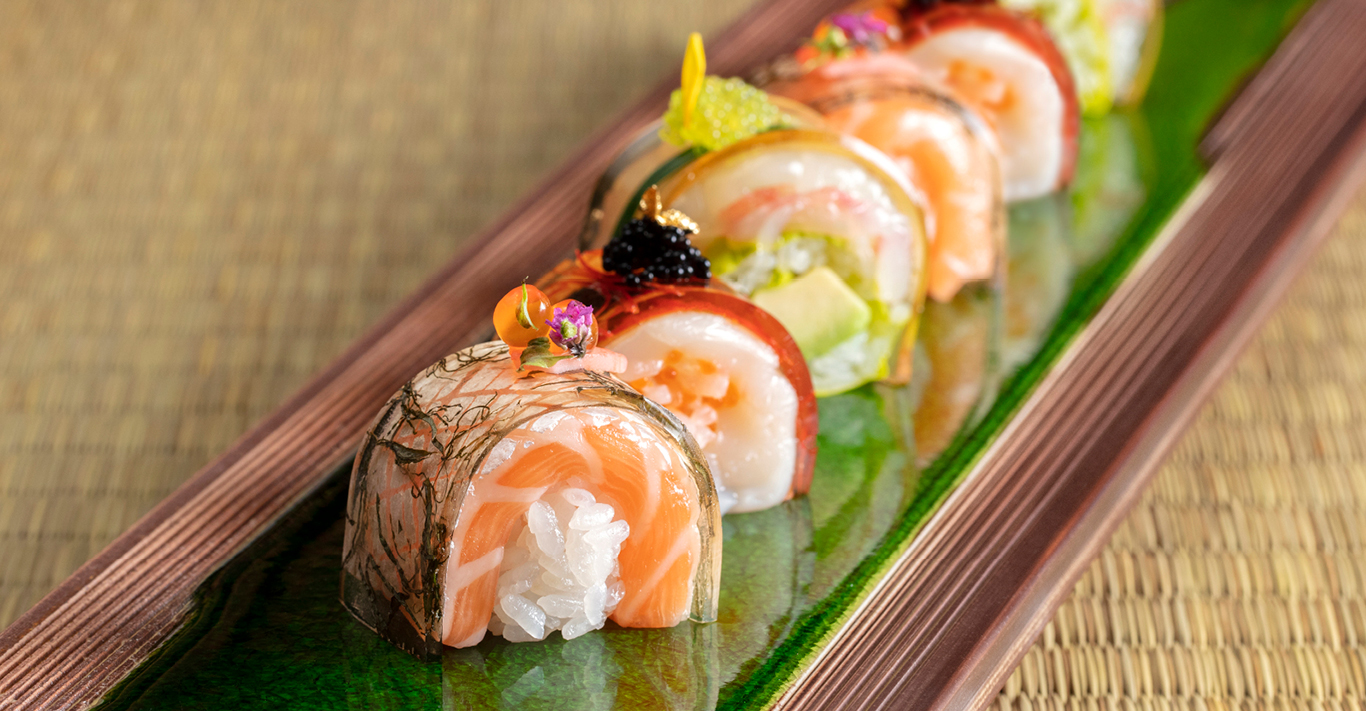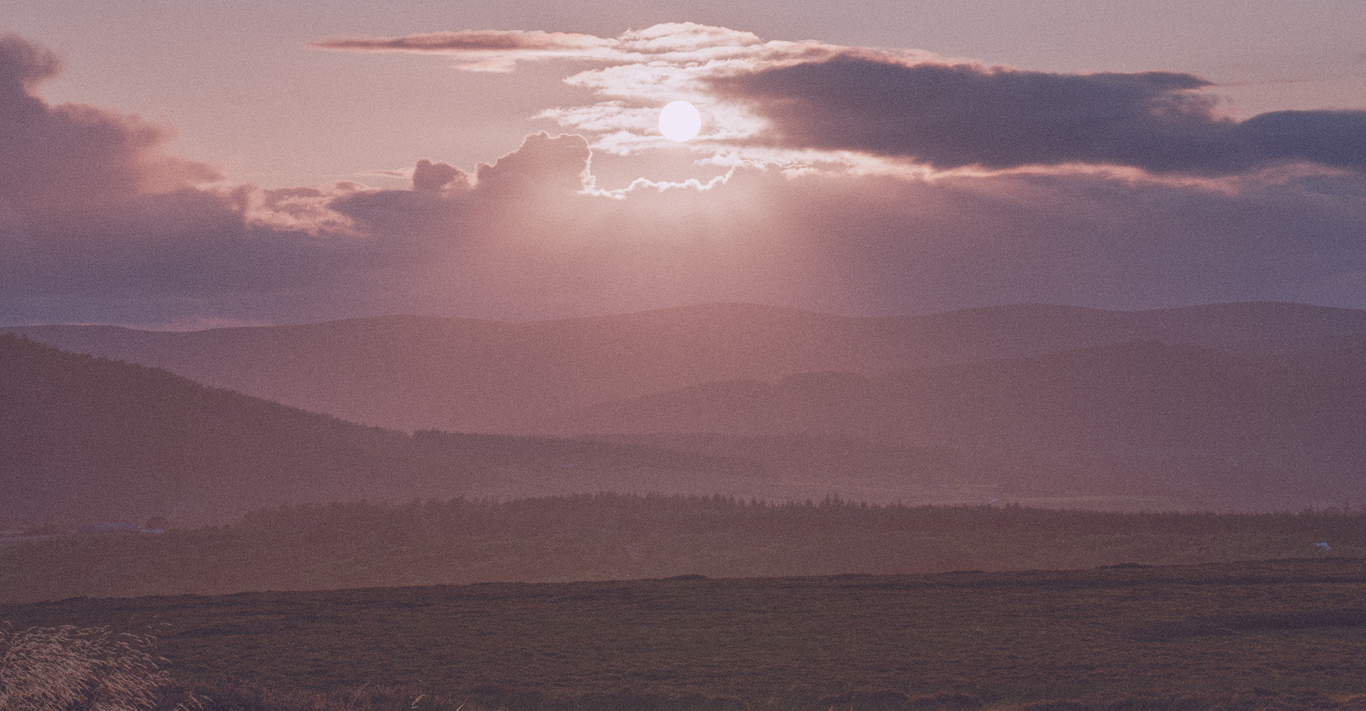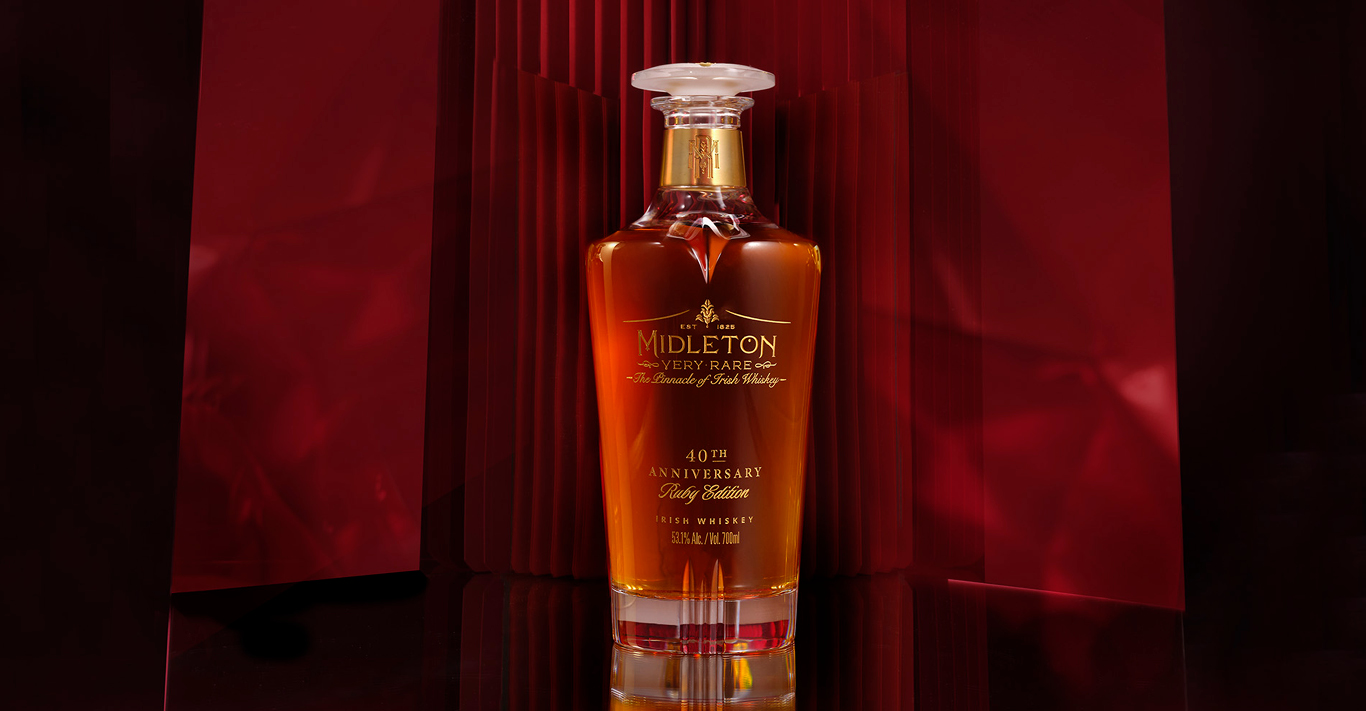WORDS
Chris Madigan
Every year, someone announces the end of the gin boom; and every year over 100 new gins are launched in the UK. This year, you can multiply that number by 10 or more because the new London Bridge Distillery School, located below The Whisky Exchange on Borough High Street, allows keen tipplers of the juniper-flavoured spirit to create their own recipe and bottle it.
The space does indeed look like a very well-funded school science lab – with 16 shiny copper mini-stills on the central bench and chalkboards explaining the science of distillation on the walls. The difference is that at this physics-cum-botany-cum-chemistry lesson, you are greeted with a gin & tonic on arrival.
Dawn Davies, The Whisky Exchange’s head buyer, says, ‘Our customers are increasingly interested in learning more about what they drink – the level of knowledge is high, but they are keen for both more education and interactive, practical experiences like gin-making, or whisky and rum blending. Especially when it’s so much fun!’
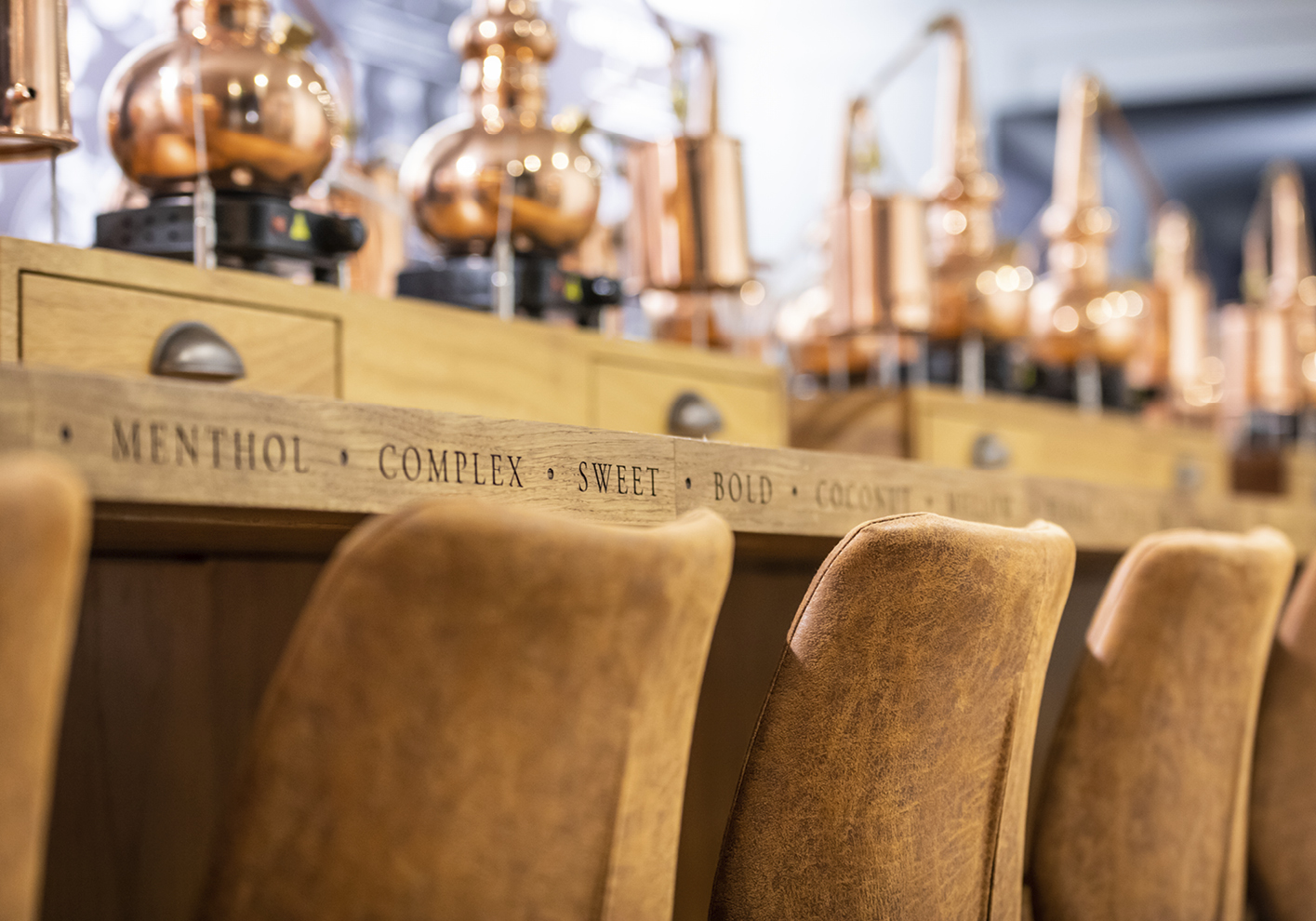
The G&T is made with the core blend that the teacher recommends is the ideal base for every gin… juniper (mandatory for your spirit to be classed as gin), coriander seed and powdered orris root, which is a fixative, helping bind the more volatile aromatics you may choose so they don’t dissipate once you’ve opened your bottle of gin. You don’t have to follow the recipe exactly – for example, adding more juniper if you prefer a classic recipe.
The next step is to choose further botanicals from different groups – citrus (from obvious peels such as orange to more unusual ones such as bergamot); dry (teas, liquorice); spices (ginger, nutmeg, cardamom, cassia bark, cubeb pepper etc); and aromatic (as diverse as jasmine, Szechuan pepper, lavender and sage). There are also rotating “seasonal” ingredients – currently pomelo peel (slightly sweeter than grapefruit) and earthy, spicy mace.
There are sample distillates to help guide your choice, as well as recommended doses of different ingredients (some are punchier per gram than others). More importantly, head teacher Chris Bolton and his team provide a gentle hand on the tiller to stop you swerving around wildly.
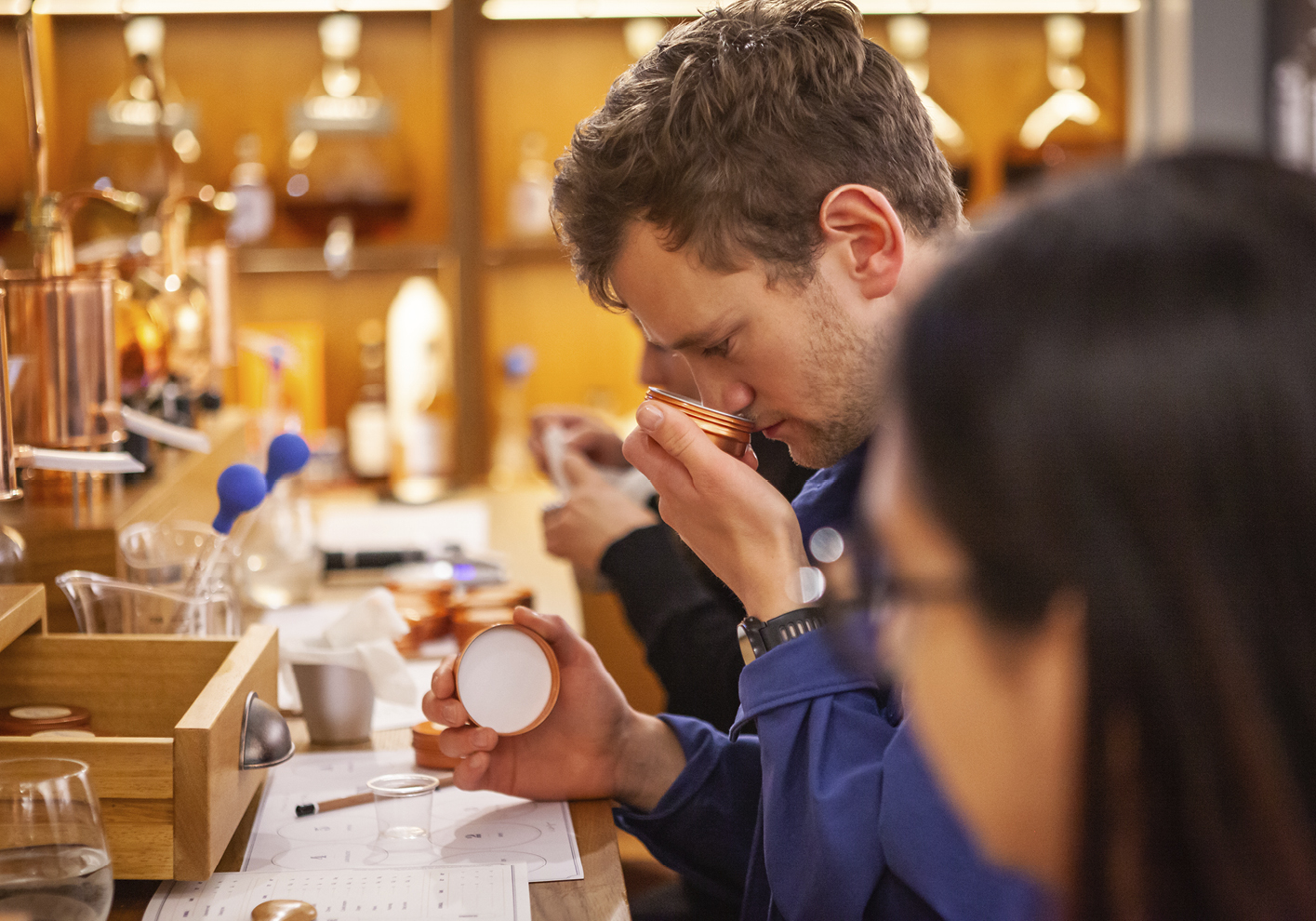
Next, you get to play with the exciting kit in front of you – popping your botanical bouquet garni into the base of the still, filled with neutral grain spirit, attaching the swan neck to that and the pipe which curls around the “wormtub” to condense the now flavoured spirit once more. And turn on the heat.
It takes a few minutes for the first drips to appear (although not as long as heating the equivalent amount of water, because ethanol boils at just over 78°C, science fans). You collect and discard around 20ml of “heads”, not because the alcohol you’re using will contain any significant methanol or other unpleasantness (it has already been rectified), but because there are oils in the botanicals which could cause cloudiness.
Once you have removed that liquid, you start collecting the heart of the distillation. While that is dripping into your beaker, the teacher tells great stories about the history of gin – its roots (which go back further than Dutch genever); the Gin Craze; the origin of phrases such as “blind drunk” and more. It even comes up to date with significant landmarks, such as Sipsmith campaigning to reverse the law that banned small stills. That allowed the craft gin explosion and led directly to these individual stills at the London Bridge Distillery School.
There’s a little more science before you bottle your gin. There is checking the specific gravity (the alcohol by volume, or ABV) with a device like a kaleidoscope, which is a lot of fun. Blending is essentially dilution – don’t panic that when you add distilled water, your gin suddenly goes cloudy; it soon stirs into a clear solution.
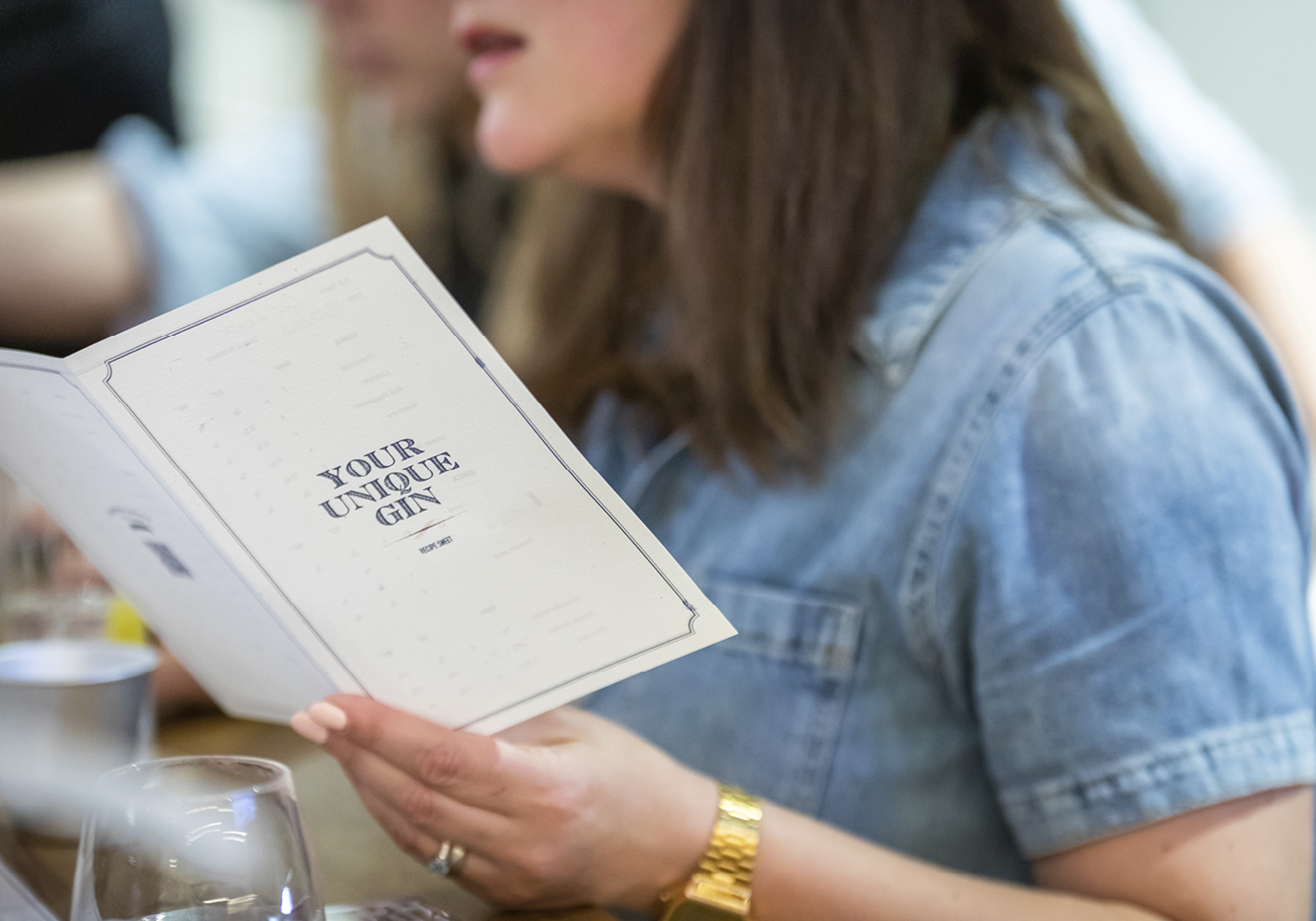
The good news is that there is some left over, for comparing with your companions and for a little surprise treat at the end. (We won’t spoil it.) The Whisky Exchange also stores your recipe, so you can order a re-up at any time (£35 for a 500ml bottle for gin; £45 for whisky or rum). If it goes down particularly well, you can discover the purpose of the impressive 50-litre still in the corner of the schoolroom… you can order a case of bottles with bespoke labels for a wedding, party or as corporate gifts.
Gin distillery is available on Thursday evenings and Saturday afternoons. There are also blending masterclasses for Scotch whisky (Wednesday evenings, Saturday late afternoons) and rum (Friday evenings). These sessions weave history and technical know-how more around an understanding of how different styles of these complex spirits combine. It’s not as simple as ‘I like/hate smoky whiskies’, so you do have the chance to make three test blends, to allow for mistakes! Again, the guidance of the teacher is invaluable.
That is equally true of The Whisky Exchange shop above the school. It’s like the scene in National Treasure when the chamber full of gold is revealed – there are so many exciting and intriguing bottles in every spirit category that you need someone to help you make a choice. Dawn Davies says, ‘We took the reverse journey to many retailers. We started online and then opened shops later. So, we want to offer our customers as rich an experience as possible if they come by, whether it’s joining the Distillery School or just talking to our shop staff. Their expertise and passion is amazing. They are so good at helping people and sharing their knowledge without being snobby. And that gives our customers the confidence to experiment with what they drink.’
The London Bridge Distillery School is at The Whisky Exchange, 88 Borough High Street, London SE1 1LL. Prices start at £120 for gin distilling, £120 for whisky blending and £95 for rum blending. Book at londondistilleryschool.com

